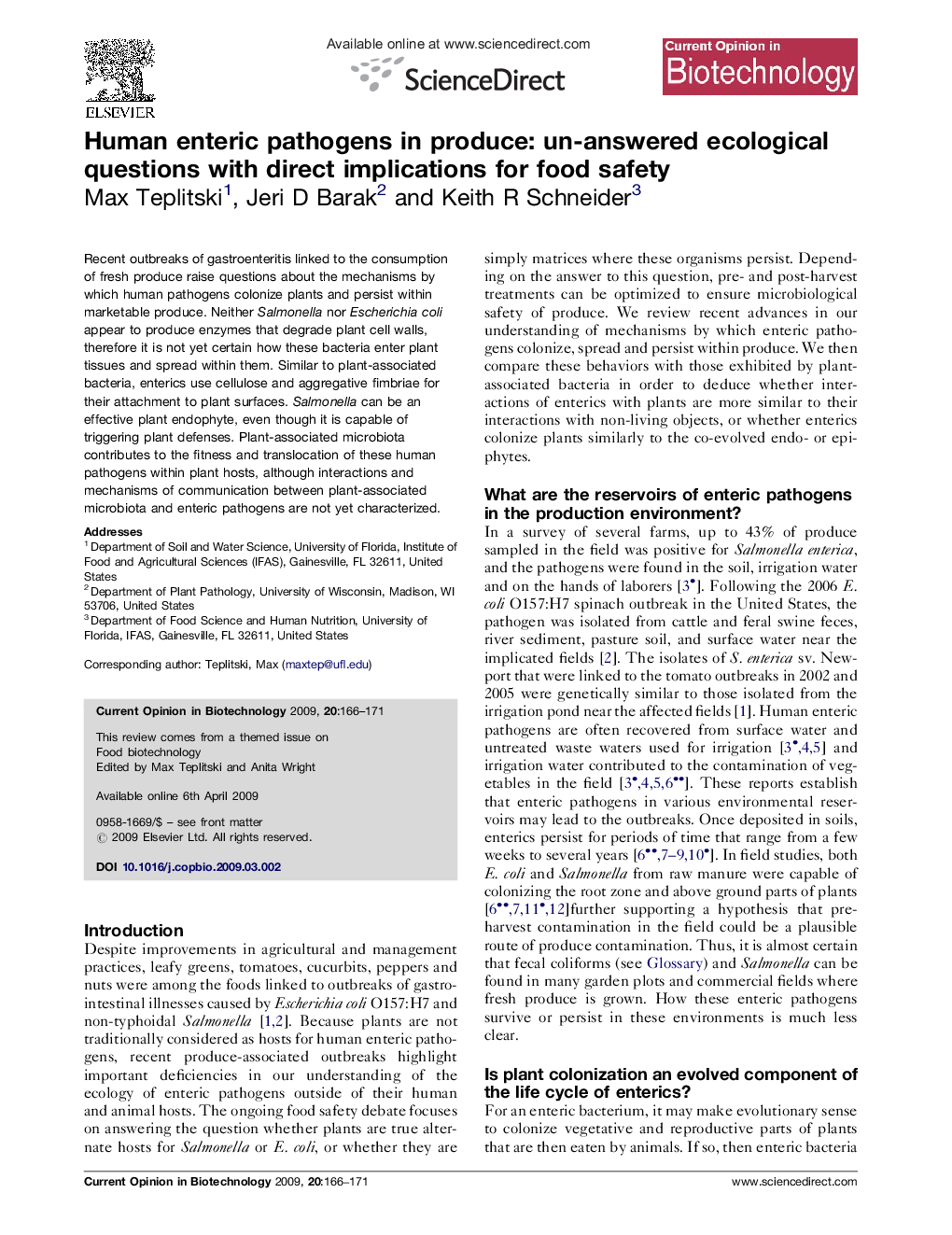| Article ID | Journal | Published Year | Pages | File Type |
|---|---|---|---|---|
| 16125 | Current Opinion in Biotechnology | 2009 | 6 Pages |
Recent outbreaks of gastroenteritis linked to the consumption of fresh produce raise questions about the mechanisms by which human pathogens colonize plants and persist within marketable produce. Neither Salmonella nor Escherichia coli appear to produce enzymes that degrade plant cell walls, therefore it is not yet certain how these bacteria enter plant tissues and spread within them. Similar to plant-associated bacteria, enterics use cellulose and aggregative fimbriae for their attachment to plant surfaces. Salmonella can be an effective plant endophyte, even though it is capable of triggering plant defenses. Plant-associated microbiota contributes to the fitness and translocation of these human pathogens within plant hosts, although interactions and mechanisms of communication between plant-associated microbiota and enteric pathogens are not yet characterized.
